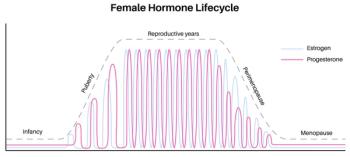
9 Clinical Signs and Symptoms of Migraine Prodrome: At-a-Glance for Primary Care
The premonitory constellation of neurologic, autonomic, and behavioral symptoms is increasingly understood as the earliest manifestation of migraine pathophysiology.
Migraine remains one of the most prevalent and debilitating neurological disorders globally, affecting approximately 15% of the worldwide population and roughly 1 in 7 Americans annually.1 Despite its high prevalence, the prodromal phase of migraine, occurring in approximately 60% of migraineurs,2 remains underrecognized in clinical practice, representing a critical missed opportunity for therapeutic intervention.3
The prodrome, or premonitory phase, manifests 24 to 48 hours before the headache phase and can persist for 4 to 72 hours if untreated.3 This phase is characterized by a constellation of neurological, autonomic, and behavioral symptoms that are increasingly understood to represent the earliest manifestations of migraine pathophysiology rather than mere precipitating factors.4 Recent evidence has challenged traditional concepts of migraine "triggers," suggesting that symptoms such as food cravings, mood alterations, and sleep disturbances may be early migraine phenomena rather than causative agents.1
The short slide show above summarizes the primary signs and symptoms comprising the migraine prodrome, with the caveat that not all people who experience the premonitory phase report all or all of the same symptoms.
References
Burch R, Rizzoli P, Loder E. The prevalence and impact of migraine and severe headache in the United States: figures and trends from government health studies. Headache. 2018;58(4):496-505. doi: 10.1111/head.13281
Rossi P, Ambrosini A, Buzzi MG. Prodromes and predictors of migraine attack. Funct Neurol. 2005 Oct-Dec;20(4):185-191.
Gao L, Zhao F, Tu Y, Liu K. The prodrome of migraine: mechanistic insights and emerging therapeutic strategies. Front Neurol. 2024 Nov 29;15:1496401. doi: 10.3389/fneur.2024.1496401
Schwedt TJ, Lipton RB, Goadsby PJ, et al. Characterizing prodrome (premonitory phase) in migraine: results from the PRODROME trial screening period. Neurol Clin Pract. 2025;15(1). doi:10.1212/CPJ.0000000000200359
Newsletter
Enhance your clinical practice with the Patient Care newsletter, offering the latest evidence-based guidelines, diagnostic insights, and treatment strategies for primary care physicians.

























































































































































































































































































